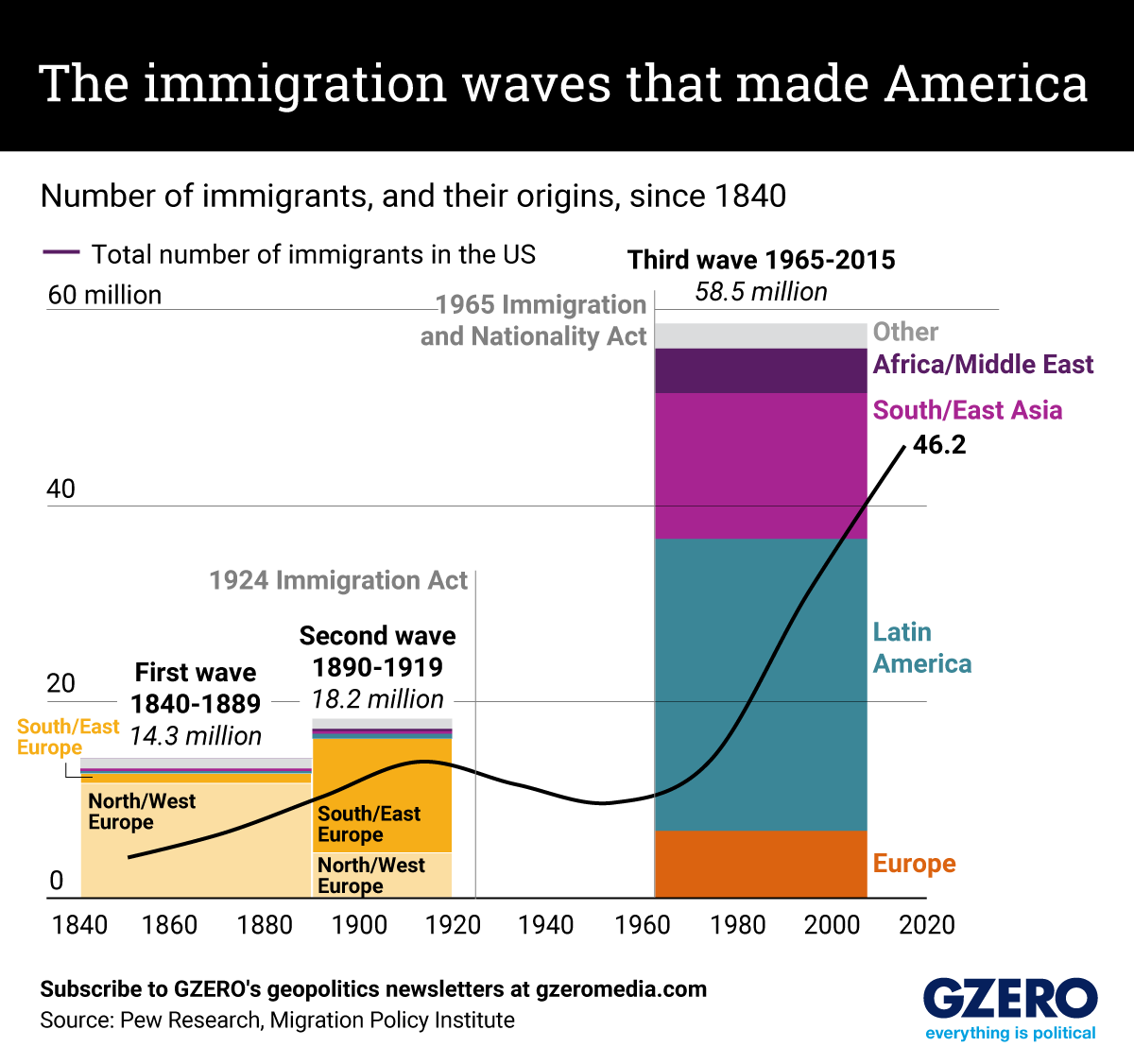As the 2024 US election approaches, immigration is among the most important and polarizing issues in American life.
The United States is, of course, a nation of immigrants. But their origins have changed a lot over the past 150 years, as have the laws that govern who can, and can’t come in.
Since the mid-19th century there have been three major waves. The first, mainly from Northern and Western Europe, came at a time when there was little federal immigration policy at all, with the notable exception of a racist law banning immigrants from China.
The second wave, coming chiefly from Southern and Eastern Europe, provoked a sizable backlash against Catholics and Jews who were seen as economic, political, and even genetic threats to America.
This led to a sweeping 1924 law that imposed national quotas, dramatically reducing overall immigration. That law held sway until a 1965 reform abolished the quotas and eased entry for family members of immigrants.
That marked the start of the third wave, which dwarfs the earlier two in size and has come mainly from Latin America and Asia.
Here’s a look at the overall number of immigrants in the US and their countries of origin in the three great waves. Note that these numbers capture only legal entries. The phenomenon of undocumented migration – which began at large scale only over the past several decades – is not reflected here.
